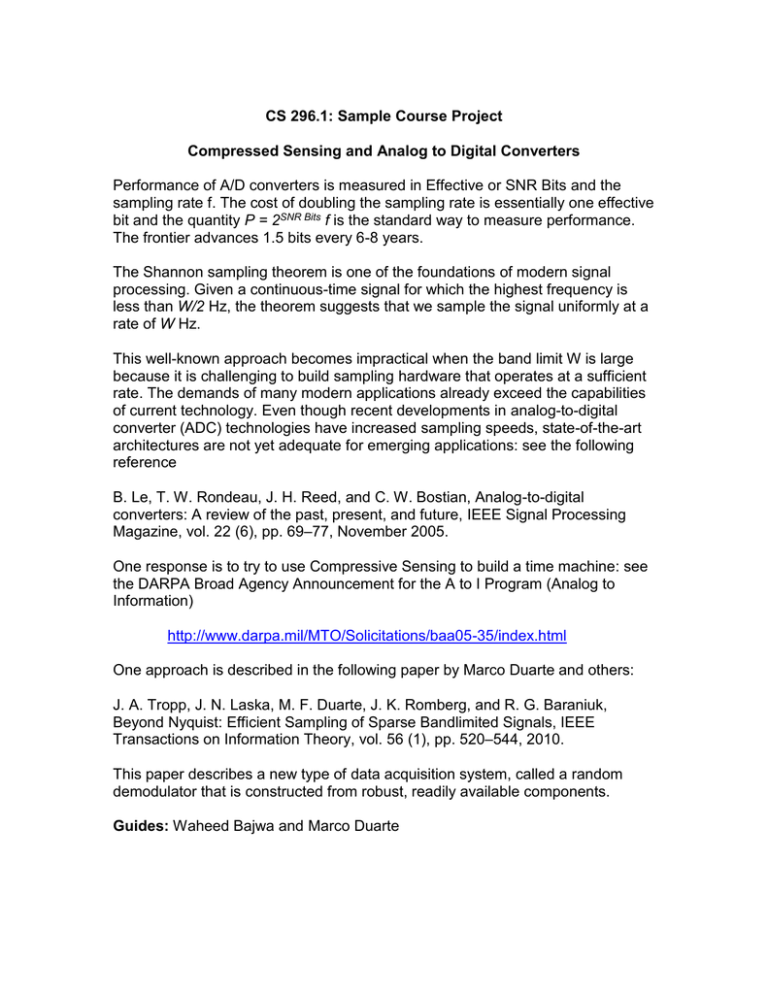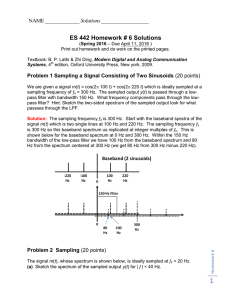CS 296.1 - A to D Graduate Project.doc
advertisement

CS 296.1: Sample Course Project Compressed Sensing and Analog to Digital Converters Performance of A/D converters is measured in Effective or SNR Bits and the sampling rate f. The cost of doubling the sampling rate is essentially one effective bit and the quantity P = 2SNR Bits f is the standard way to measure performance. The frontier advances 1.5 bits every 6-8 years. The Shannon sampling theorem is one of the foundations of modern signal processing. Given a continuous-time signal for which the highest frequency is less than W/2 Hz, the theorem suggests that we sample the signal uniformly at a rate of W Hz. This well-known approach becomes impractical when the band limit W is large because it is challenging to build sampling hardware that operates at a sufficient rate. The demands of many modern applications already exceed the capabilities of current technology. Even though recent developments in analog-to-digital converter (ADC) technologies have increased sampling speeds, state-of-the-art architectures are not yet adequate for emerging applications: see the following reference B. Le, T. W. Rondeau, J. H. Reed, and C. W. Bostian, Analog-to-digital converters: A review of the past, present, and future, IEEE Signal Processing Magazine, vol. 22 (6), pp. 69–77, November 2005. One response is to try to use Compressive Sensing to build a time machine: see the DARPA Broad Agency Announcement for the A to I Program (Analog to Information) http://www.darpa.mil/MTO/Solicitations/baa05-35/index.html One approach is described in the following paper by Marco Duarte and others: J. A. Tropp, J. N. Laska, M. F. Duarte, J. K. Romberg, and R. G. Baraniuk, Beyond Nyquist: Efficient Sampling of Sparse Bandlimited Signals, IEEE Transactions on Information Theory, vol. 56 (1), pp. 520–544, 2010. This paper describes a new type of data acquisition system, called a random demodulator that is constructed from robust, readily available components. Guides: Waheed Bajwa and Marco Duarte Course Project: The random demodulator requires that we are able to make a random sequence that changes sign very fast. It is hard to make a rectangular sequence on very short timescales. I think it is possible to use Run Length Limited Sequences instead of random sequences. The longer gap between transitions should translate into a higher fidelity rectangular waveform and more effective bits. The challenge will be to generalize the current theory to include these constrained sequences.




